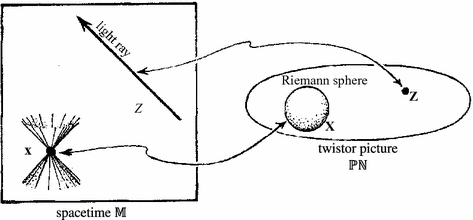Last Friday I went to hear a talk by David Gross at the CUNY Graduate Center on “The Coming Revolutions in Fundamental Physics”. This was more or less Gross’s standard advertisement for string theory that he has been giving for nearly 20 years now. He explicitly started off with the claim:
“Fundamental Physics = String Theory”
His first PowerPoint slide was a quote from “Hannibal” by Thomas Harris, a sequel to the novel “Silence of the Lambs”. Evidently late in this novel the main character is depicted manipulating the “symbols of string theory”, with “equations that begin brilliantly and end in wishful thinking”. It sounds like Harris really has got the right idea about string theory, but Gross said his talk was designed to argue that string theory was not wishful thinking.
He then went on to claim that in 3-4 years there will be a headline in the New York Times about the discovery of supersymmetry at the LHC. From what I can tell, the LHC should have first beams in 2007, but even if everything goes according to plan, it won’t be until 2008 that the experiments there will have accumulated a non-trivial amount of data and analyzed it. Experience with colliders generally has been that getting them running at a useful luminosity can take quite awhile after they are first turned on. So 3 years from now is definitely out, 4 years is optimistic. This is now getting close enough that Gross and others seem intent on ignoring the failures of string theory, desperately hoping that superpartners will pop out of the LHC, thereby providing at least some vindication of the train of reasoning that lead to string theory. What will be interesting to see will be what Gross et. al. do when this doesn’t happen. Will they drop string theory? Quite possibly the LHC will revolutionize physics by showing us what is really causing the spontaneous breaking of the electroweak gauge symmetry. If this happens, everyone will abandon string theory and start working on this, 1984-2008 then becoming a period in the history of physics that particle theorists try and not think about.
Gross’s talk contained the usual tendentious pro-string theory points, here’s a few of them with commentary:
1. ” String theory is in a period like that of 1913-1925, it’s like the Bohr model, we’re waiting for the analog of Heisenberg’s or Schrodinger’s breakthroughs”
The problem with this is that the Bohr model was actually predictive, for instance it predicted a lot about atomic spectra that could be experimentally checked. There clearly was something right about the Bohr model, there is no good evidence there is something right about string theory.
2. “String theory is better than QFT, because QFT Feynman diagrams have these interaction vertices you can assign any interaction strength you want to”
This is not true of gauge theories, the different vertices are related by gauge symmetry. True you have to pick over-all gauge groups and representations, and the Higgs sector is problematic, but the claim that there is just one string theory is just wishful thinking.
3. “String theory is better than QFT because interactions are not at points, so short distance behavior is better”
Gross should be well aware that asymptotically free gauge theories are extremely well-behaved at short distances despite having point-like interactions, since he discovered this. It is also true that string theory perturbation theory is only known to be well-behaved up to two loops. My colleague Phong claims that higher loops remain very much not understood.
4. “String theory is a consistent, finite quantum theory of gravity”
Simply not true. Peturbative string theory is a divergent expansion, non-perturbative definitions don’t work for four large flat dimensions, rest small.
5. “String theory inspired brane-world scenarios, although I don’t really believe these”
Why would you think that an argument in a theory’s favor was that it inspired some clearly wrong models that you don’t believe and that don’t predict anything?
While Gross mentioned the “discretium”, he didn’t really explain exactly how disastrous this is for string theory, since it makes it essentiallly vacuous. He made a big deal of string theory implying that our notions of space and time need to be changed, but made it clear that no one really has a viable idea about how to change them. He puts his hopes in the fact that we still don’t understand what string theory is. This seems to me to be exactly the sort of wishful thinking that he claimed at the beginning was not what string theorists were doing.
His talk went on for more than an hour and a half. Several questions from the audience were taken, including one from Michio Kaku who claimed that dark energy was evidence of supersymmetry and asked about theories with two times. Gross didn’t seem interested in saying much about such theories. I noticed that two string theory postdocs I know were in the audience. They’ve both told me that they think the subject is at a point of crisis and they are thinking of quitting. I don’t think anything Gross said was likely to encourage them to continue.


